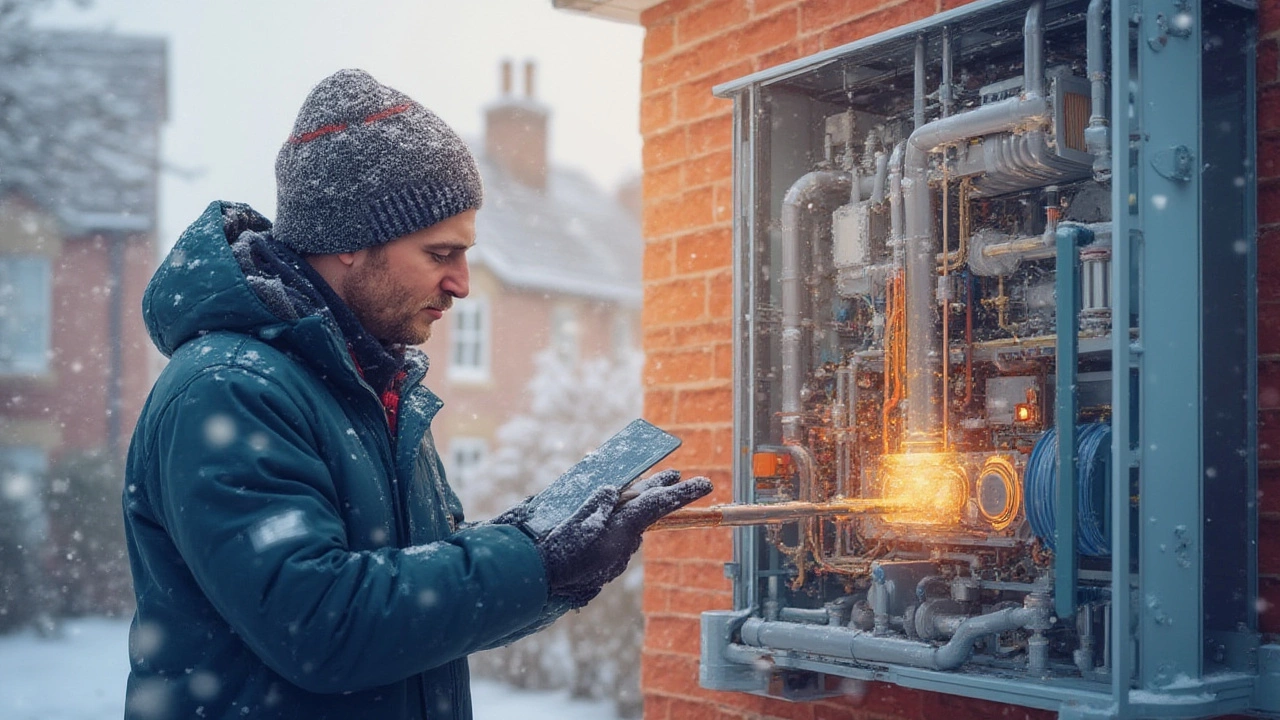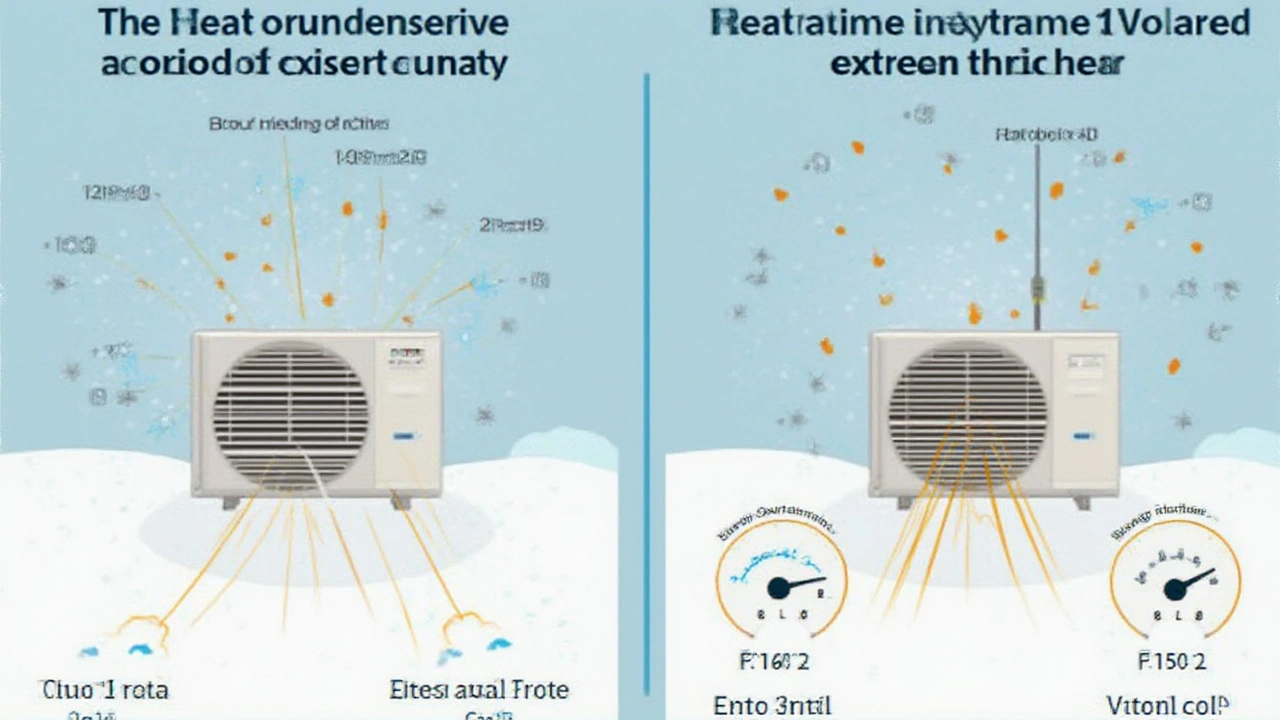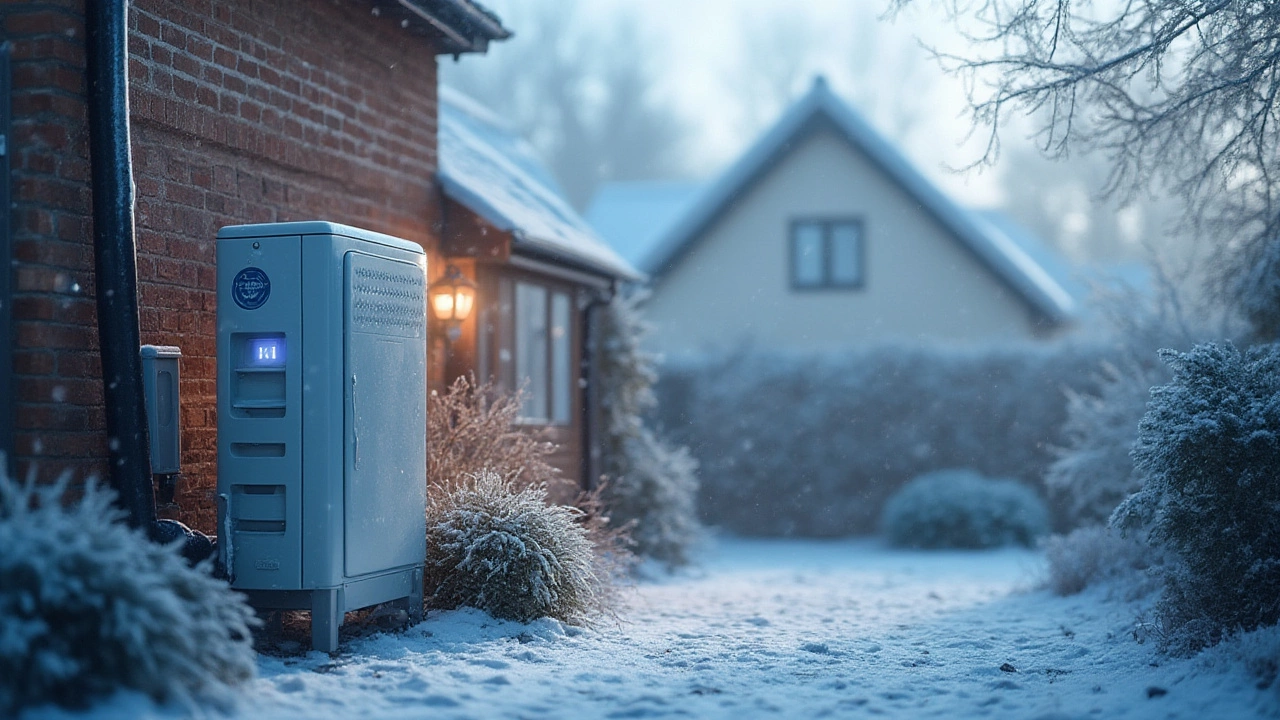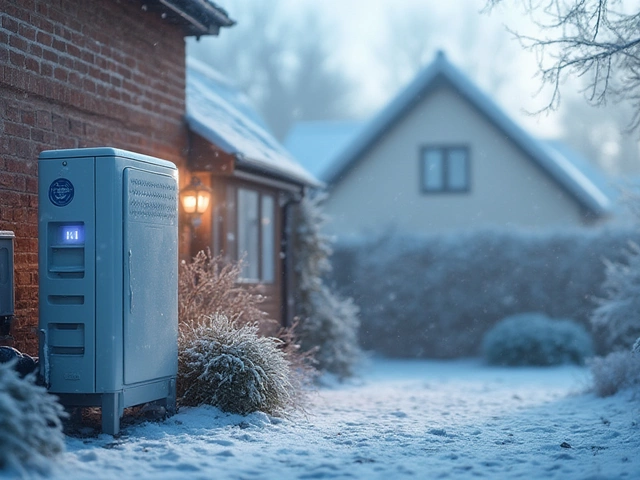Ever walked outside on a February morning, felt your nose freeze, and wondered if your heat pump would just give up? You're not alone. When winter pulls a deep freeze, people stop trusting the quiet whir of their heat pumps and start worrying about chilly toes and climbing bills. Here’s the honest scoop about how low you can go, what to expect, and how to avoid frosty surprises with your heat pump.
How Heat Pumps Actually Work — And Why Temperature Matters
Let’s get one thing clear: a heat pump doesn’t create heat out of nothing. Instead, it pushes warmth from outside to inside, or flips the script come summer. Sounds like magic, right? But there’s always some warmth outdoors—even if it feels like Antarctica—so a heat pump has something to work with. That is, until the temperature drops so much the unit starts working overtime, or just plain struggles to keep up.
Most standard air-source heat pumps run efficiently down to about 40°F (4°C). As it gets colder, say around freezing (32°F or 0°C), they lose ground but can still do their job. The real eyebrow-raising point? Below 25°F (-4°C), the heat pump efficiency drops off sharply. Below about 20°F (-6°C), most older or basic models throw in the towel and switch to a backup heat source—usually electric resistance coils—which are way less efficient and very noticeable on your electric bill.
But here’s the twist. Today’s “cold climate” heat pumps can work surprisingly well at much lower temps. Some models from top brands like Mitsubishi or Daikin can squeeze out warmth at -13°F (-25°C), though their efficiency still takes a serious hit. These high-end units use fancier compressors and refrigerants to wring more heat from thin air, but they’re pricier up front. It’s like swapping a station wagon for an off-roader: both get you there, but one grips the road better when things get rough.
Why does this temperature limit matter? Because as your heat pump strains to pull more heat from ever-colder air, its “coefficient of performance” drops. Simply put, you get less heat output for every dollar you spend on electricity. At 47°F (8°C), the average heat pump might deliver three units of heat for every unit of energy used. At 17°F (-8°C), you might get only one. That means bills rise and comfort drops—two things no one enjoys mid-winter.
Bear in mind, ground-source (geothermal) heat pumps aren’t really bothered by outdoor air temps because they grab heat from below ground, where things stay pretty stable year-round. But most people have air-source heat pumps, so that’s who this advice is for.

Signs Your Heat Pump Is Struggling — and What You Can Do
You don’t need a degree in thermodynamics to spot a heat pump that’s lost its groove. Maybe your house feels a few degrees colder than usual, even though the thermostat’s set the same. Maybe your system runs for way longer stretches or seems to never shut off. Or, you check your electric bill and need to sit down. These are classic signs the heat pump's hit its temperature limit, and the emergency or backup strip heat is working overtime.
Here’s a not-so-secret fact: whenever you see “auxiliary” or “emergency heat” light up on your thermostat, your system is telling you the heat pump can’t keep up alone. Auxiliary or “strip” heat is basically like cranking up a giant toaster—it works, but it costs.
If you want to help your heat pump during bitter cold spells, here are some practical moves:
- Install a programmable thermostat. This lets you schedule setbacks when you don’t need full heat, then ramp up before you wake or come home. Just avoid swinging temps too much—you’ll risk having the backup heat kick in, which defeats the purpose.
- Seal those drafts. Close up gaps around windows, doors, and floors to trap more warmth. Even small leaks can make your heat pump’s job a lot harder.
- Keep filters fresh. Dirty filters reduce airflow, making the unit work even harder. Change or wash filters monthly during heavy use.
- Don’t block the outdoor unit. Clear away snow, ice, or debris so air can flow freely around the coils. A blocked unit can freeze up, trip safety switches, or even get damaged.
- Consider a cold-climate upgrade. If your home routinely drops below 25°F (-4°C), check out newer models rated for subzero conditions. Look for certifications like Energy Star’s “Cold Climate Heat Pump” or Canadian “NEEP” ratings.
- Add backup heat you control. Some homes add pellet stoves or gas fireplaces just for extreme cold snaps. This gives you insurance if the power goes out or your system just can’t keep up.
Stuck with an older system? Ask your service tech if settings are dialed in for your region, or if there are firmware upgrades for the control board. Sometimes a little software tweak can help squeeze more performance from the system—or at least make transitions to backup heat smoother and less noticeable.
Lastly, don’t ignore weird noises, constant ice buildup, or sudden changes in performance. Frost on the outdoor coils comes with the territory, but your system should defrost itself regularly. If the coils stay frozen or you hear lots of clanks, get a pro to have a look. A stuck reversing valve or low refrigerant can make your heat pump seem useless even when temps are okay.

What to Consider If You’re Buying or Upgrading a Heat Pump
If you’re dreaming of toasty winters without breaking the bank, it’s smart to think carefully before you pick your next heat pump. The biggest mistake folks make? Not matching the system to their climate. A heat pump that crushes it in Georgia could leave you shivering in Maine.
Check a heat pump’s “minimum operating temperature”—it’s not just marketing fluff. This number tells you the lowest outdoor temp at which the system is designed to produce useful heat. Cold-climate models might promise full performance down to -13°F, while basic units tap out at 25°F. Don’t just take a salesperson’s word for it—look for the technical spec sheet and ask your installer to walk you through what to expect at various temps.
Size is the next big thing. Undersized heat pumps work themselves to death and still come up short when it’s frigid. Oversized units cycle on and off, chewing through parts and missing humidity control. Have a trusted pro do a “Manual J” load calculation, which factors in insulation, windows, and even how many people (and pets) live there.
If you live where winter lows regularly dip below freezing, ask about “dual fuel” systems. These pair a heat pump with a gas or oil furnace that kicks in during extreme cold, letting you run on the cheaper, cleaner heat pump most of the time without sacrificing comfort during deep freezes. It’s like driving a hybrid car but for your house.
Here’s a quick checklist if you want maximum efficiency and few surprises:
- Insist on a unit with a variable-speed compressor—these adjust output on the fly, keeping things comfy and efficient as weather swings.
- Look out for the HSPF (Heating Seasonal Performance Factor) rating for heating and SEER (Seasonal Energy Efficiency Ratio) for cooling. The higher the numbers, the better the savings.
- Ask how the system handles defrost cycles—those moments when your outdoor coil ices up and switches briefly to cooling mode to thaw itself. Some modern units warm just the coil, not your whole house.
- If you’re in a rural spot prone to power outages, think about battery or generator backup. Without power, even the fanciest heat pumps sit idle.
No heat pump is magic—every system has a hard limit when it’s just too cold to keep up without help. For standard units, expect a sharp drop in efficiency below 25°F (-4°C). With the latest tech, especially if you pay a bit more upfront, you can keep your house comfy even in stretches that make your lips stick to your front door.


